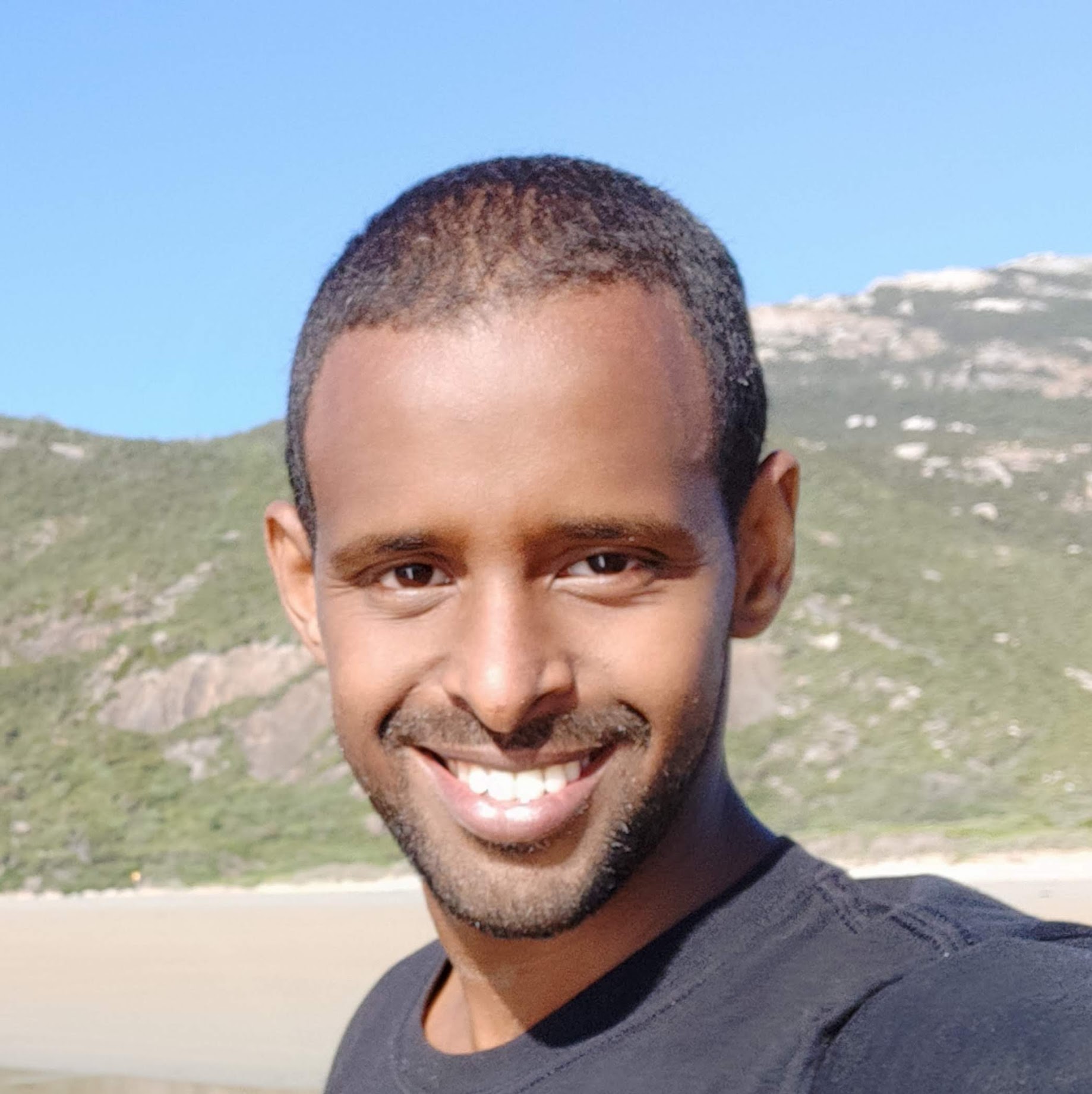CILMIBAARIS SOO BANDHIGTAY DOWLADDA GEDDISLEYDA AH EE SOMALILAND
Hargeysa (Wararka PP) — Geeddi-socodkii dimquraadiyadda ee maamulka goosashada doonaya ee Somaliland wuxuu ku dambeeyaay dowladnimo ku salaysan koox gancsato oo tartanka ka soo horjeedda, fursadaha ganacsigana isku kooba. Dooddani waa gunaanadka cilmibaaris ay qortay Dr Claire Elder oo ka tirsan London School of Economics, laguna soo daabacay International Affairs oo ay Oxford University Press u saarto Chatham House.
Dr Claire Elder: “Dowladda geddisleyda ee Somaliland way wiiqday dumuqraaddiyaynta, way kobcisay kooxo ganacsato oo aan doonayn in lala tartamo.”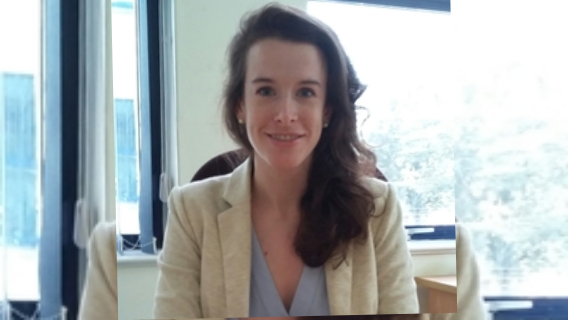
Cilmibaaristu waxay bannaanka soo dhigtay sida dowlad gedidisley ahi (oligopolistic state ) ugu guuleysatay inay nabadda dhowrto laakiin wiiqdo dimuqraaddiyeynta iyadoo danteeda ku gaaraysa habka nabadgelyeynta (securitization). Dowladnimada noocan ahi waa mid ay suurtogaliyeen koox ganacsdato ah oo ka soo jeeda Hargeysa, fadhigooduna yahay Jabuuti. Dowladnimada geddisleyda ahi waxay aad u sii tisqaadday markuu uu Axmed Maxamed Siilaanyo qabtay talada maamulka Somaliland 2010-kii.
Cilmibaaris daaha ka rogtay isku qoofalnaanta ganacsatada iyo siyaasiyiinta la jeeska ah Madaxweyne Muuse Biixi.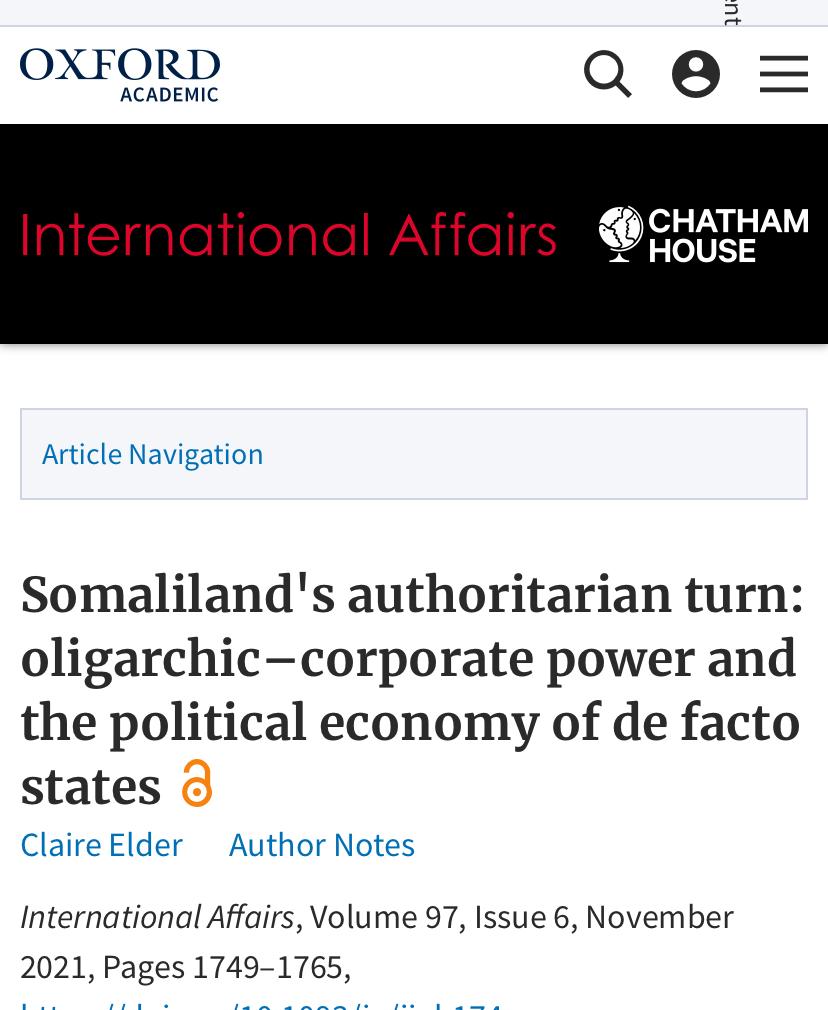
Claire waxay ku doodday in Somaliland ka shidaal-qaadato taliska Ismaaciil Cumar Geelle oo marmar lagu tilmaamo inuu yahay ninka xukuma Somaliland saameynta uu ku leeyahay siyaasadda Hargeysa awgeed. Muddada dheer oo uu xisbiga Kumliye talada hayo ( 2010 ilaa hadda) waxaa sii kordhay musuqmaasuqa, yaraanta awoodda dowladda, iyo ku tiirsanaanta koox ganacsato oo ka faa’iidda canshuurta yar oo ay bixiyaan. Claire waxay kale oo ku doodday in Xisbiga Waddani uu yahay rajada keliya si loo soo afjaro dowladnimada geddisleyda. Ismaciil Hurre Buubaa, Wasiirkii Arrimmaha Dibeddaa Soomaaliya, ayaa ka mid ah dadka ay waraysatay Claire. “Somaliland weli dagaalkii SNM ayay ku jirtaa. Dowlad horusocod ah ayaa loo baahan yahay. Maskax xoreyn ku salaysani meel inama geynayso” ayuu Buubaa yiri. Hadalka Buubaa waxaa sii taageeray ku shubashadii dhowr doorasho oo ka dhacay degmooyinka Somaliland ka taliso, sida ay Claire qortay.
Muuse Biixi kama madaxbannaana qowlaysato jeebkoodu qoyan yahay oo si bareer ah ugu adeegata hay’adaha dowladda.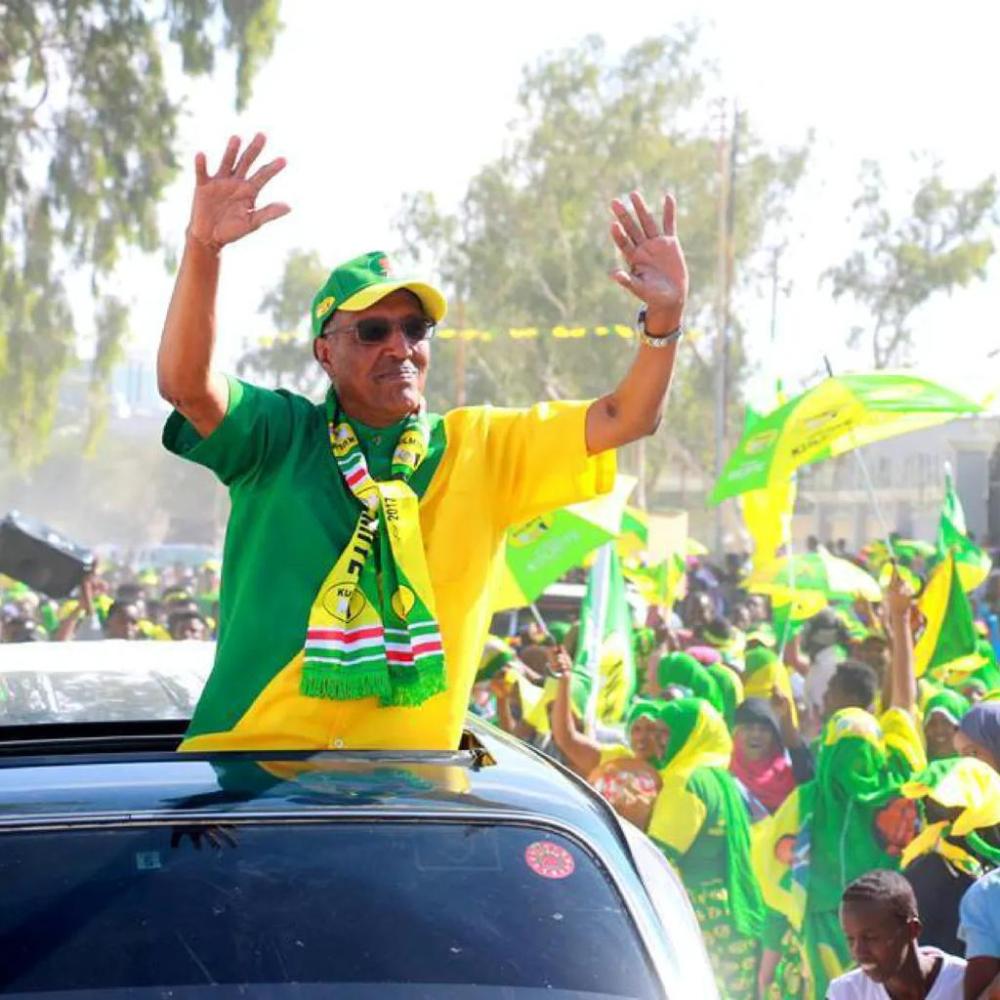
Dagaalladii sagaashamaadii ka dhacay waqooyiga ayaa keenay in Beesha Garxajsis, oo waagi hore wax ka dheefi jirtay habkii ismaamulka dadban ee Birtishaka (indirect rule), maamuli jirtay dhoofinta xoolaha iyo ganacsiga, ay noqoto beel la iska bahaystay, ayay Claire ku doodday. “Silaanyo ayaa aad u sii wiiqay awoodda Garxajiska” ayay qortay Claire.
Cilmibaaristu waxay xustay sida sirdoonka Galbeedku uga caawiyeen Muuse Biixi Cabdi inuu ku guuleysto tartanka madaxweynanimada sanadkii 2017-kii “mowqifkiisa la dagaallanka argagixisada awgiis” ayay qortay Claire. Waxay isweyddiisay halka siyaasadda Somaliland u socoto maadaama deeqbixiyeyaashu meelo kale ay hadda mudnaanta siinayaan.
Dr Claire Elder waxay intii u dhexeysay 2012 iyo 2017kii gorfeeye u ahayd International Crisis Group. Waxay buuggeeda qalinjibinta ka qortay dhaqaalaha siyaasiga iyo colaadda Soomaaliya ka jirtay. Waxay muddo dheer ku sugnayd Hargeysa si ay u samayso cilbimaarista salka u ah warqad cilmiyeedkeeda.
© Puntland Post, 2021
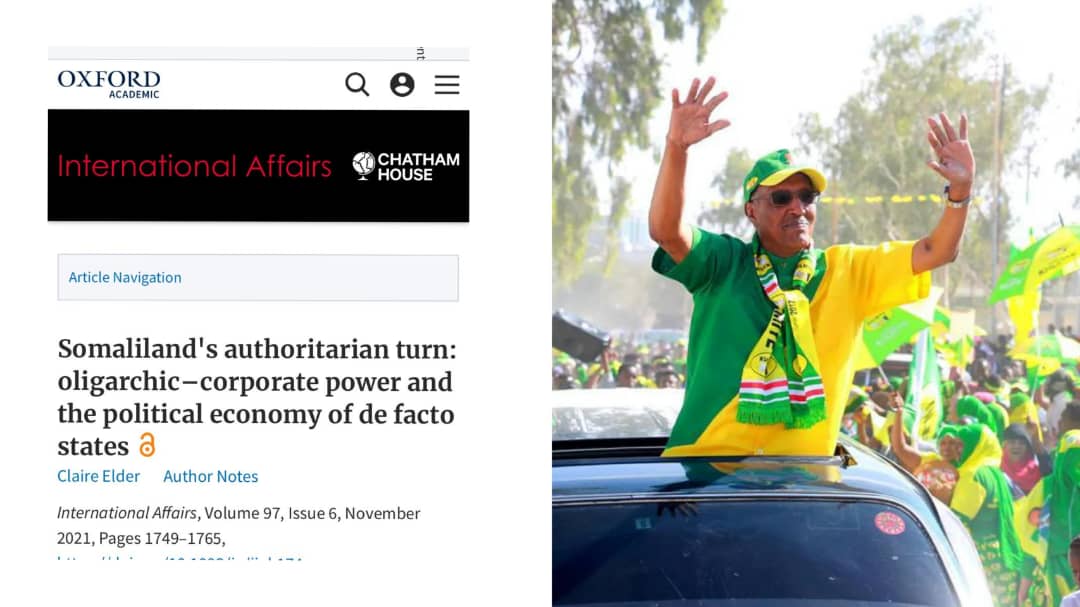
Cilmibaaris soo Bandhigtay Dowladda Geddisleyda ah ee Somaliland – Puntland Post
Hargeysa (Wararka PP) — Geeddi-socodkii dimquraadiyadda ee maamulka goosashada doonaya ee Somaliland wuxuu ku dambeeyaay dowladnimo ku salaysan koox gancsato… Sii akhri
 puntlandpost.net
puntlandpost.net
Somaliland's authoritarian turn: oligarchic–corporate power and the political economy of de facto states
Claire Elder
Author Notes
International Affairs, Volume 97, Issue 6, November 2021, Pages 1749–1765, https://doi.org/10.1093/ia/iiab174
Published:

Somaliland's authoritarian turn: oligarchic–corporate power and the political economy of de facto states
For many years Somaliland has been presented as a democratic success due to bottom-up statebuilding. This article looks at Somaliland's political economy t

